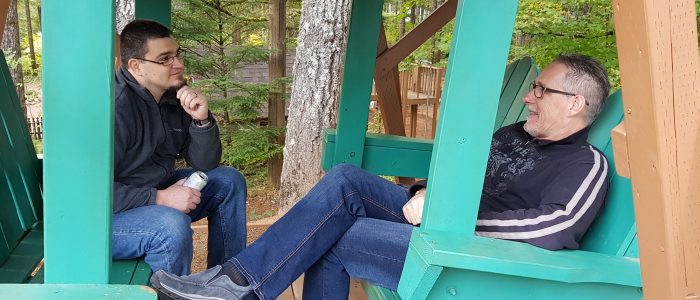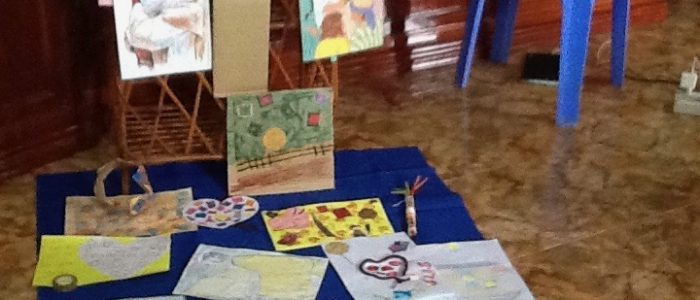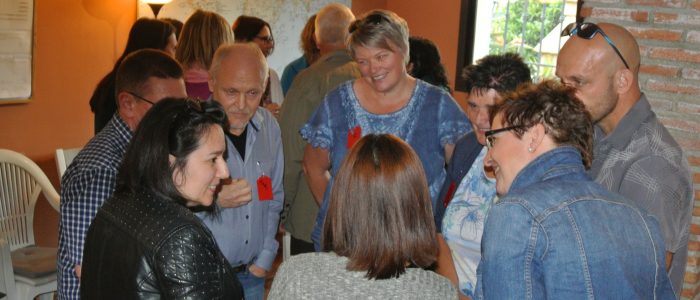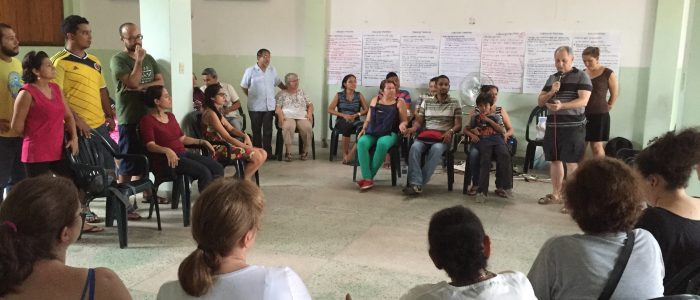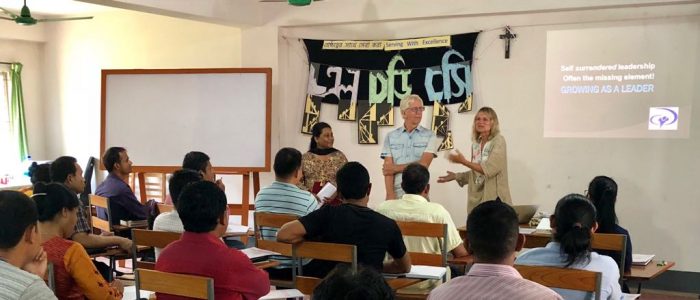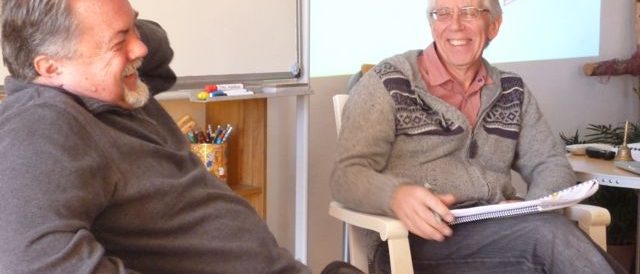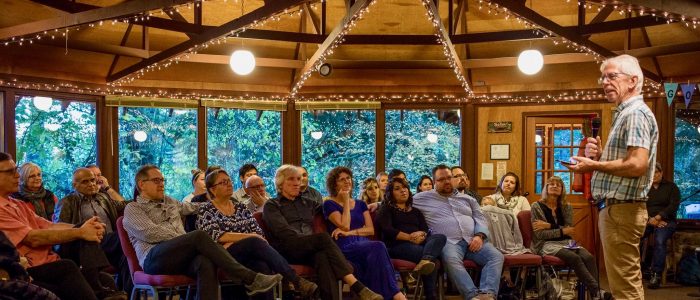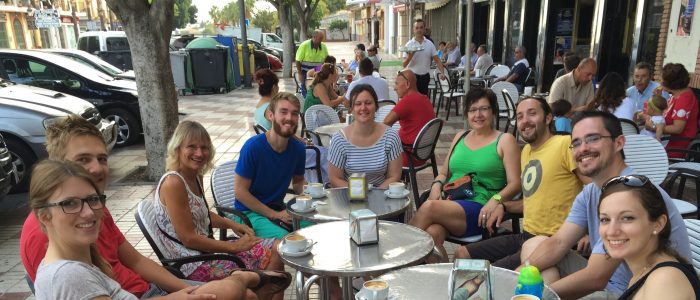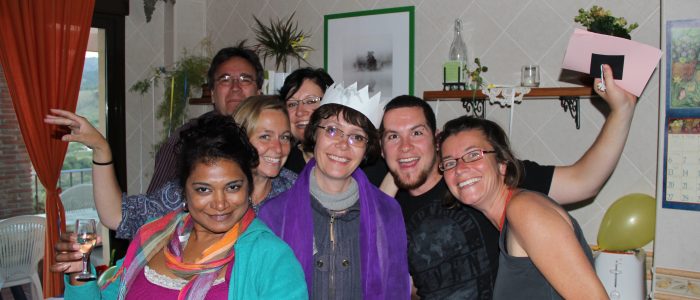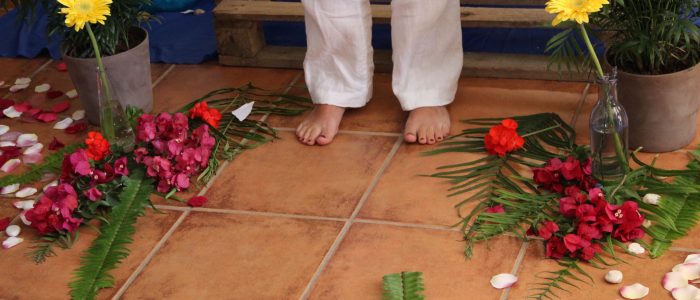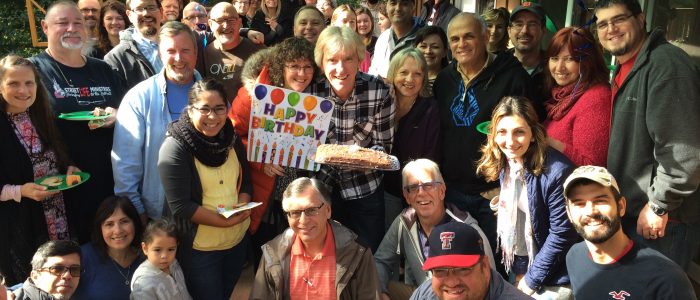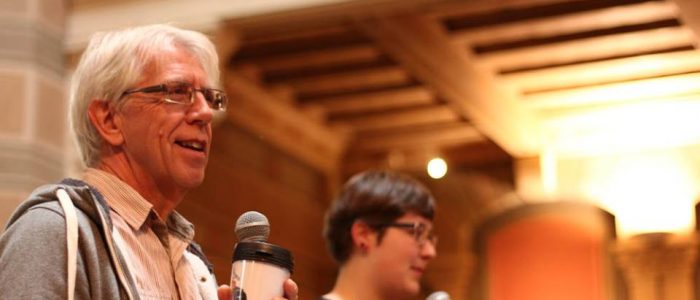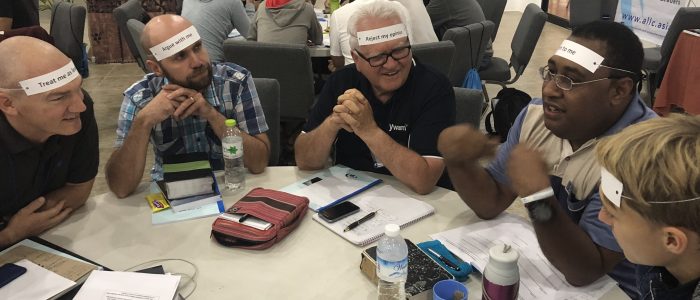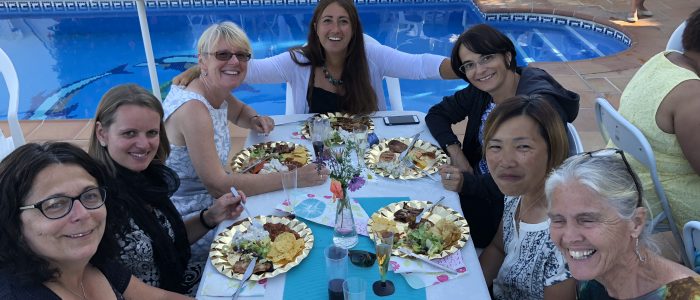
This weekend we had our son & his fiancé fly down from Scotland to spend a couple of days with us, along with her father and friend. We had a fantastic two days, sharing and eating and playing together. They left with a little more colour than they came with, a little more relaxed, and having enjoyed catching up relationally. As they looked out from our terrace, there were all kinds of ooh’s and aah’s at the amazing view of the costa del sol. What made the time so enjoyable? Apart from the joy of being with family, the environment gave them a feel of being on holiday. Our taxi service from the airport, the prepared room, the hospitality given, the whole experience made them feel valuable.
What surroundings enable you to be the most productive? Creating these surroundings, atmospheres or environments is crucial for building relationships, for enjoying celebrations, for learning together, for working together, for brainstorming vision for the future, for dealing with confrontation and every meeting of minds and hearts. The problem is that we often don’t think enough about it and pour all our energy into the content or the agenda of gatherings and miss out on how we make people feel.
- People can change the environment (positively and negatively): I have a whole list of people who make an impact on their entrance. At the top of the list is my wife Rite, who in any social group, in no time at all, gets people laughing, warms up the atmosphere and enables us to relax together and enjoy friendship. She brings a positive outlook into even the most negative of situations. She looks on the bright side of life. So on this weekend she had a key role in making a positive impression for our guests.
I am sure you have heard of Coach Powers, who has a vision for YWAMers to be fit and healthy. He joined us in a global leadership gathering several years ago at the end of a long day of business agenda. People were tired and ready for a break. In 2 minutes there was a change in the atmosphere. He started a chant: “I am happy.” “I am healthy.” “I feel terrific.” Smiles broke out, people started to join in, they pulled their stomachs in, stood straighter and then the exercises began. Suddenly we had new energy and rather than drooping at the end of a hectic day, we were dancing!
A good friend who I have worked with for many years is a South African lady named Mariette. When she stands up to lead a workshop she stirs faith in everyone. She hardly ever teaches for long but processes a message with the group and has them actively engaging with the content. Your spirit is impacted and you are encouraged to step out of your comfort zone and get active. She shares from her heart and is very vulnerable which opens up the environment for others to share in the same way.
Lynn Green is a man of God who has been a spiritual father to me over many years and has spoken at most of the leadership development courses that I have run. When he stands up to speak, there is an authenticity about him that commands respect. His depth of wisdom to share on any subject makes a profound affect on everyone. He tells stories of his personal experience that become nuggets of gold and principles that remain in people’s minds. There is always a sense of feasting at a table when he speaks. He brings an atmosphere that says – it’s going to be OK, it’s all in hand, be secure.
When the YWAM founder, Loren Cunningham, gets on stage, you start thinking that with God anything is possible. He shares dreams and a picture of what God wants to do in the future that inspires and encourages everyone. Faith, hope and expectation are released and you leave knowing that nothing is too hard for God.
Joshua met with God and received the go ahead for “operation promised land.” He went through the camp and communicated that in 3 days they would march. There was a new atmosphere of expectation. I am reminded of the book and film of “Lord of the rings” where Aragorn makes a speech to the troops as they wait in fear and trembling before the black gates of Mordor. As he speaks, he imparts hope and faith. The army begins to stand up straight and believe that they can make a difference. They raise their spears and swords and live to see the battle won. As Joshua goes through the camp encouraging the troops they become ready for anything. The conquest of Canaan begins with the miracle of the waters of the Jordan separating to allow them to cross the Jordon on dry land. The morale of the troops is sky high. When they face the daunting walls of Jericho and hear their leader once more say “God is making a way where it seems there is no way” or something to that effect, they put their trust in God. They walk around Jericho each day for 6 days and then on the 7th day they circle the walls seven times, shout, blow trumpets and see the walls crumble. Joshua knew the importance of creating a faith environment, stirring up anticipation and getting everyone involved to see victory.
An environment we are all responsible for is that which surrounds us as a person. What do people pick up when they meet me? What fragrance am I giving off? Will people pick up that I am stressed, joyful, frustrated or at peace? Mother Teresa knew the importance of this truth and said, ‘Let no one ever come to you without leaving better and happier. Be the living expression of God’s kindness… kindness in your face, kindness in your eyes, and kindness in your smile.’
Who are you seeking to imitate, that changes the atmosphere in a positive way when they come into a situation? These people are thermostats not thermometers. They adjust the temperature in the room so everyone is comfortable, they don’t just measure the temperature or morale of everyone there.
- Anything that affects our senses will have an impact on our environment (especially in meetings):
- How do you feel? When you enter a room, what is your first reaction? Is it safe, warm and comfortable? Do you feel welcomed? Is there something for you to do or somewhere for you to go, or do you just feel awkward? Is the room or meeting location at the right temperature? The first thing Jesus did when he met some potential disciples on the street was to say, “Come to my home for tea”. This was so ordinary and yet so relational and meaningful for these two fishermen. They felt welcomed, excited, honoured and followed Jesus with a curious anticipation of what was going to happen.
- What do you see? Is the room organised? Is the seating set out in the best way? Does it tell you that you will be listening to the speaker or be talking to others and having discussion and interaction? Is the room pleasing to the eye? Are there pictures, decorations, plants and flowers to bring some life to the room? I have often put some jokes up on the PowerPoint on a loop so while people are finding their seats, there is laughter in the room. It enables people to relax and forget about whatever negative issues have been playing on their minds previously. Saint Francis of Assisi said, ‘A single sunbeam is enough to drive away any shadows.’ It is helpful to display specific quotes or objects on tables or around the room that introduce your theme or topic. People can easily connect with visuals and words that can be read and re-read that underline some key points of the session.
- What do you hear? Before there can be a meaningful silence, it’s useful to enjoy a healthy noise. It’s always positive if you have people chatting away, music going on in the background and everyone experiencing that buzz of expectancy. I love the sound of the orchestra tuning up in the theatre. All those sounds of the instruments aren’t yet in tune but as they prepare and get ready they create anticipation of what is to come. How are the acoustics in the room? Make sure the speaker has a good microphone so he or she can be understood without effort. The words you hear can make you feel welcome or put you on edge, depending on how they are spoken and the body language that goes with them. I often play the piano as people are gathering and the sound of music can be soothing and create a peaceful, joyful, meditative environment. So let’s use sound to the maximum.
- What do you taste? Psalm 34 says, “Taste and see that the Lord is good.” The psalmist is saying when we think of the Lord, it’s like we have a wonderful taste in our mouth. How can we create an appetite for what is coming? Of course it’s always nice to have some goodies available to nibble on and water to drink on the table. If you have a long meeting, to have some boiled candy to suck on can be the sugar boost that is needed to keep people awake! The bottom line is that the message needs to be tasty!
- What do you smell? Smell hits the limbic system, which is the mood centre of the brain, first, surpassing the other senses. New research shows that the smell and sight of flowers can change your brain chemistry and lift your mood. I love walking in the garden of our villa and smelling various plants like the Jasmine, Plumeria, Angel trumpet and Orange blossom. I close my eyes, take a deep breath and allow the fragrance to fill my being. Somehow the fragrances are refreshing and calming to my spirit. It can be just the same in a room. What a shame if you can just smell the disinfectant from this morning’s cleaners. Just as everyone loves the smell of baking bread as you come into a kitchen, it’s wonderful to come into a meeting room to the smell of coffee & tea brewing and then move to the serving table and experience the smell of flowers & fruit laid out ready to be enjoyed. There is a spiritual fragrance too when people have been worshipping and praying together for some time – we experience this in our villa. It’s like the walls and furniture soak up the prayers and worship of everyone who has been present. As you set up and prepare a place, pray in the fragrance of Christ that will impact all in attendance.
- Choose the right environment for the right meeting: I have a vivid memory of our first pre- marriage class with the pastor of our church. He invited us into his office and we took our seats on one side of his huge desk. The pastor sat in his plush swivel black chair on the other side of the desk which felt like the other side of the room! I can’t remember one thing that was said but I do remember that I felt awkward, out of my comfort zone and was glad when the session came to an end.‘ So environment is not only to be enjoyed but it also enhances or detracts from effective learning.
When you are meeting with individuals, it’s much harder to feel at ease if you are sitting in a clinical office or in a large church facility. How much nicer is it to be meeting in a café, in your lounge or on a park bench with a beautiful view.
Jesus would often disappear from the revival meeting to head into the countryside and sit down on some mountainside to spend time with his father. I have a sneaky suspicion that it was more than getting away from people to have some alone time – I think it was also to do with having the beauty of creation surrounding him. He loved and enjoyed spending time in the environment of the hillside and lakes and it enabled him to relax and be able to listen to his Father. He just had to turn up and soak it in, in the classroom we have to set the environment up ourselves for people to enjoy.
When it was time for the Lord to speak to Elijah after the miracle on mount Carmel, where did he take him? On a long run and a hike up a mountain. When it was time for Moses to receive the Ten Commandments, he was invited to take trek up a mountain as well.
As leaders it is good to think not just about the content and vision that is needed but also the setting where it will be delivered. When I used to organise three-day retreats for my leadership team in Scotland, we stayed in a cabin, with access to a sports hall, swimming pool and beautiful countryside where we could take walks. The location added so much to the overall experience.
So as you plan your next mentoring session, staff meeting, conference or event, think about the environment in a new way. Ask not only what information or principles do I want to pass on but what environment will help that learning to take place. Ask not only what do I want them to do but how will I make them feel?
Until next month
Stephe

